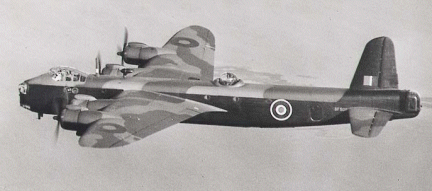Bomber Crashes at Butt Lane

It was on the night of 16th and 17th May 1943, when a Short Stirling bomber was on a training flight from RAF Tilstock, an airfield which was close to Tern Hill in Shropshire.
The aircrew consisted mainly of New Zealanders and it was piloted by Sgt. L. C. Wright.
During the flight, the Stirling bomber, BF398 of the 75th Squadron, suffered the failure of two of its four engines, consequently the decision was taken for the crew to bail out of the aircraft, which they duly did apart from two crew members. The pilot stayed with plane to attempt a safe landing and help the other remaining crew member who was having problems with his parachute. The pilot had made an earlier attempt to land the aircraft but realised that he was in a built up area. His second and final attempt could not be controlled resulting in the plane diving steeply into the ground, partially burying itself and killing the pilot.
Another fatality was one of the crewmen who was described as being ‘killed after he left the plane’, we must presume that this was the crewman who was having problems with his parachute. The aircraft crashed in the fields beyond Old Butt Lane, on the site now occupied by industrial buildings and factories of West Avenue.
There are several local people who well remember the crash and its aftermath.
One eye witness was the mother of Mr. C Carter of Hardingswood, Kidsgrove. She woke up her son to tell him that there had been an aircraft on fire, it had come in low over Kidsgrove and it had just missed the gasworks before crashing at Butt Lane.
The story of the fire might explain why the pilot didn’t attempt to limp home on the two remaining engines, but why a fire in two engines as opposed to just mechanical failure.
A special constable at that time, Harry Thompson, remembers meeting two of the bailed out crew who said that they were worried about the fate of the pilot who had stayed with another crew member who had trouble with his parachute. These two crewmen were also concerned about the seven other crew who had also left the plane. If we assume that the seven crew of concern include the parachute troubled fatality, the total crew must have numbered ten.
Over the following weeks, local people, particularly schoolboys, visited the crash site searching for souvenirs. One of the prized items of this activity seems to have been shards of perspex from the aircraft’s windows. These shards were apparently heated and used to make rings!



